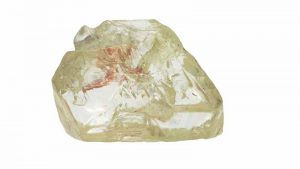Glimmers of hope

Tom Ormsby, head of external and corporate affairs for De Beers Canada, noted the North American market had a very strong response to the Black Friday weekend. He says this is evidence “consumer confidence continues to grow in the United States and has reached its highest levels in almost 17 years.”
This bodes well for the entire holiday season, since not only are most diamonds sold during this time, but the U.S. market also makes up close to half of world diamond consumption.
Ormsby was quick to confirm Canada’s passionate love affair with diamonds is also alive and well. He reminds us with a “solid economy and a multiple-diamond ownership culture in Canada on a per capita basis,” Canada is the world’s third-largest diamond producer based on value. In part, this is driven by women.
“Economic empowerment of women with more women in the workforce has increased self-purchasing,” Ormsby says. Thus, it is no surprise De Beers’ 2017 Diamond Insight Report revealed up to 90 per cent of diamond jewellery global sales demand comes from women. (For more on these statistics, visit www.diamonds.net/news/NewsItem.aspx?ArticleID=59337&ArticleTitle=De+Beers+Marketing+Targets+Women and www.wsj.com/articles/de-beers-faces-tricky-task-of-selling-diamonds-to-millennials-1509328920.)

These are not the only bright spots in the diamond value chain. Despite the impending closure of De Beers’ Victor Mine in Ontario, for instance, Ormsby declared Victor “struck a chord as the little diamond mine that could” due to its spectacular production of high-quality diamonds. Although the mine is small, he says “the sorting floors in London, then Botswana were (and still are) all abuzz when Victor diamonds arrived. Sorters and diamond experts always wanted to get a good look.” As part of the original team that built and opened the mine, Ormsby is proud it withstood two global recessions and credits the dedicated culture of many long-term staff members.
All in all, Canada’s mines are doing well. In Nunavut, Baffin Island anticipates the opening of the Chidliak Mine in 2020, while Gahcho Kué (Canada’s sixth mine) began operation in 2016. Expected to yield more than 4 million carats annually, the latter mine will continue to produce for up to 12 years. The country’s original diamond mine, Ekati, will likely be depleted in 2020; however, plans for a new open-pit operation on adjacent property may extend operations for about 10 years.
Due to world-class environmental standards, high quality, and genuine national pride, Canadian diamonds have always been a consumer favourite. There is no doubt they will continue to shine brightly.
Millennials and diamonds: A fabulous future
Baby boomers have been superseded in numbers by millennials, who have growing purchasing power. This isn’t only true in Canada—Ormsby says China and India’s middle-class households, which consist of huge numbers of millennial-aged diamond buyers, will continue to grow over the next decade.
Obviously, millennials are quite savvy with social media and online research. Mix that with spontaneity, a leaning toward instant gratification, and their desire for experiences, and you’ve got the key to their hearts. As Rapaport puts it, “successful people want symbols.” He also notes the important role fashion and design play in positioning diamonds. When it comes to luxury goods, millennials have an affinity for the latest tech gadgets, designer shoes, handbags, and similar.
“Diamonds, by contrast, are units of value that remain and that can be handed down from generation to generation…objects that are bought to symbolize the milestones of life,” says Blom.
Low- to mid-grade diamond buying is becoming popular, and is an opening to connect with millennials. Remember, this age group has cherished memories, too. Diamonds are the perfect ‘super glue’ to memorialize relationships. They are durable, while other luxury goods lack shelf life.
Millennial marketing
Following a pattern of historical industry successes, the fairly new Diamond Producers Association (DPA), formed in 2015, is actively promoting diamonds with a multimillion-dollar marketing strategy centering around the phrase, “Real is rare. Real is a diamond.”
In this campaign, short commercials and print ads are capturing moments shared between couples in love. Debuting the commercials on the Grammy Latin Awards and the American Music Awards allowed DPA to capitalize on a hip and trendy celebrity connection.

Photo courtesy Rapaport Group
Although devised by diamond miners to promote their stones on a generic level, the DPA’s efforts have achieved traction by sharing precious moments in young millennial couples’ lives. Marketing videos depict aspects of each couple’s relationship that are imperfect but genuine—just like diamonds themselves.
Focusing on women and millennials for future diamond sales growth is an excellent way to secure diamonds’ place in the storyline of love, life together, and commitment of future diamond buyers.





